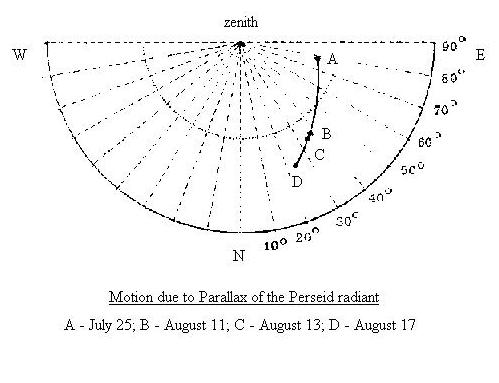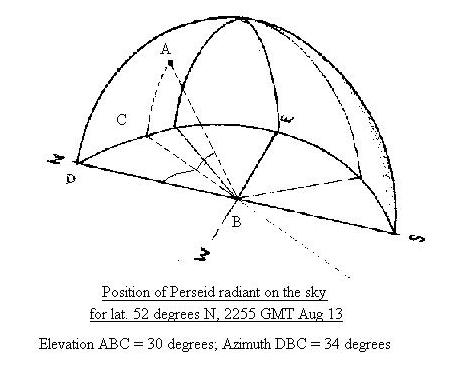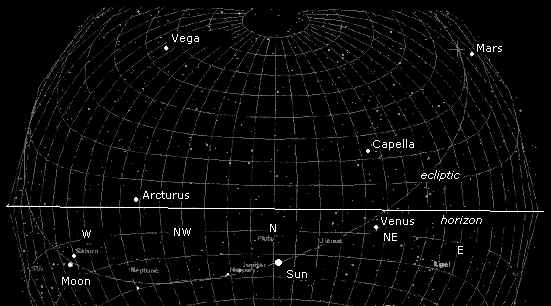
ASTRONOMICAL INFORMATION
Planetary
Ephemeris Data for the Lakenheath Area
13-14 August 1956
(Note: azimuths are true north not magnetic north)
Time (GMT) |
13/2100 |
13/2200 |
13/2300 |
14/0100 |
14/0300 |
|||||
| Alt° | Az° | Alt° | Az° | Alt° | Az° | Alt° | Az° | Alt° | Az° | |
Mercury |
not visible |
not visible |
not visible |
not visible |
not visible |
|||||
Venus |
not visible |
not visible |
not visible |
not visible |
16 |
79 | ||||
Mars |
1 |
104 | 9 |
116 | 17 |
129 | 28 |
160 | 29 |
194 |
Jupiter |
not visible |
not visible |
not visible |
not visible |
not visible |
|||||
Saturn |
11 |
222 | 4 |
235 | not visible |
not visible |
not visible |
|||
Moon |
8 |
220 | 1 | 232 | not visible | not visible | not visible | |||

North sky 0000 GMT 14 August 1956 50°N 2.5°E
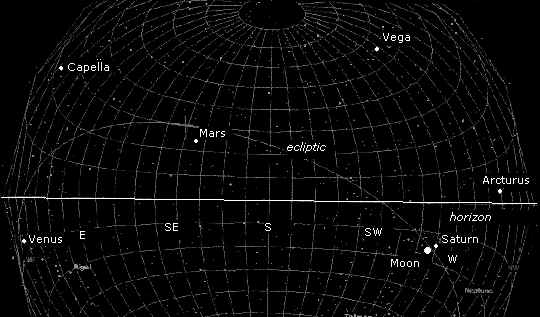
South sky 0000 GMT 14 August 1956 50°N 2.5°E
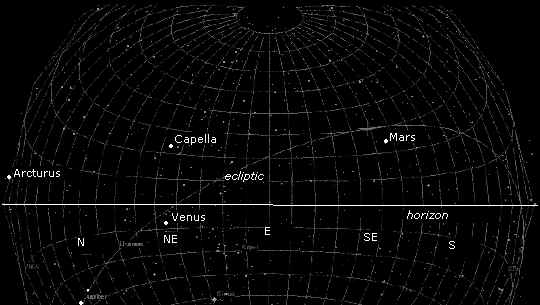
East sky 0000 GMT 14 August 1956 50°N 2.5°E
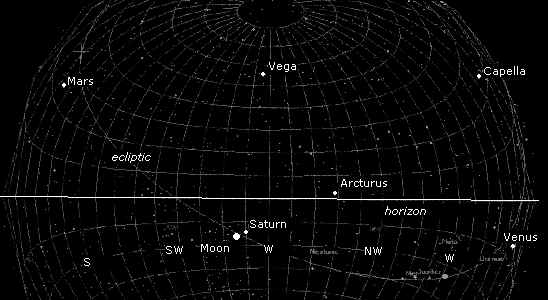
West sky 0000 GMT 14 August 1956 50°N 2.5°E
The Perseid Meteor Stream
The Perseid meteor radiant shows unusual mobility and descends across more than 50° of arc from moderately high elevation in the east towards the northeast between about July 25 and August 17, moving from about 2°RA 41°Dec in Andromeda across the celestial N of Perseus to 68°RA 61°Dec in Camelopardus, reaching a maximum of around 50 particles per hour around August 10-12 and dwindling rapidly over the next five nights or so. On the night of August 13-14 the shower has passed its maximum and the radiant is only about 10° of azimuth from its terminal position in the NNE. [Tver, Motz & Hartmann, 1979]
